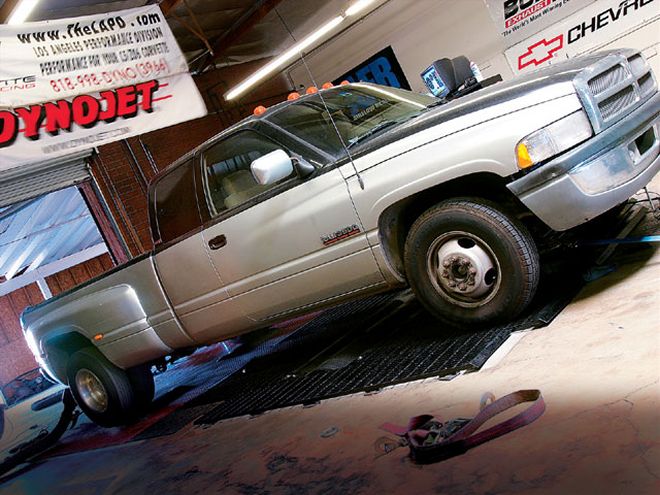
| 1997 Dodge Ram 3500 Cummins side View
On a recent trip to L.A. Performance Division, our bone-stock '97 Dodge Ram put down 159 rear-wheel horsepower and 327 lb-ft of torque. Not bad, but not all that impressive either, and the 19-second quarter-mile time (at 69 mph) made us feel more like turtles than drag racers. We needed more go, but the OEM torque converter would only hold about 50 hp over stock, so we decided to step up and install a performance transmission and billet torque converter from BD Diesel Performance.
While diesel engines can go hundreds of thousands of miles, early diesel automatic transmissions weren't up to the task of supporting all that torque for long periods of time. Our Ram's transmission was no exception and was leaking pools of ATF on the ground, even when it was just parked for an hour or two. To make matters worse, second-generation Rams have one of the least-efficient torque converters known to man and will slip at virtually any rpm, at any speed. In talking with the folks at BD, they said the stock converters had roughly a 65 percent efficiency rating, compared with 90 percent or more for aftermarket versions.
We needed a new transmission in the worst way, one that would support the power we were eventually looking to make (about 400 hp at the wheels). With the new BD transmission, we would have a torque converter with a billet front cover, a steel stator, and a 93 percent efficiency rating. The transmission itself would also have increased line pressure through the valvebody and through the PressureLoc system, resulting in more power-handling capability and firmer shifts. While our old transmission worried us at any horsepower level over stock, the new one was rated at a continuous 400 hp, which would be perfect for towing. For our Ram, a performance transmission was the step that opened the door for all sorts of other modifications, so stay tuned as we turn up the fuel in Part 2 in hopes of gaining an extra 100 hp at the wheels.
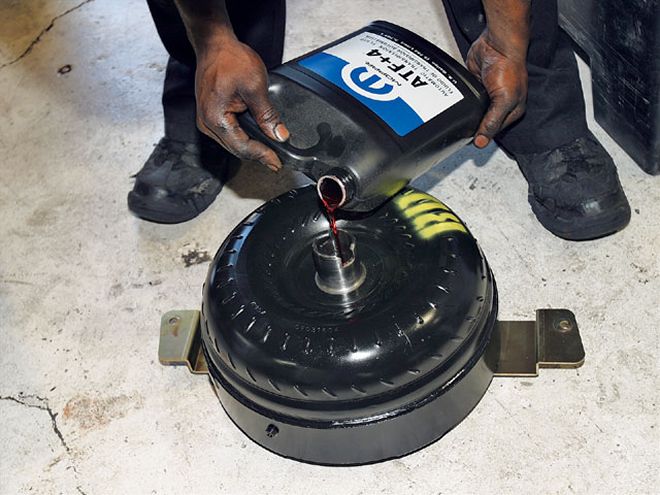
| Fluid was poured into the converter so the transmission didn't have to try to fill up the converter with fluid when the vehicle was first driven.
Life Or DeathAs dramatic as it may sound, testdriving the vehicle after a transmission swap is the most important part of the whole process. If something goes wrong with your transmission and you don't know about it, it can easily spell disaster. Running a transmission that's low on fluid, has incorrect throttle pressure settings, or has seals, bushings, or steel lines that leak, can have disastrous results such as burned-up clutches, a slipping transmission, or it could even cause a fire. We've seen all these scenarios happen, and they aren't pretty.
The last thing you'll want to do after putting in a new transmission is take it apart again. When taking a testdrive, start out small-a few blocks or so-and then work up from there, always double-checking for vibrations, binding parts, or leaks. Check your fluid level after each drive (deep pans often require extra fluid) and check with a reliable source about how much ATF to put in to begin with in case the dipstick is wrong. We did have some peace of mind because if anything was wrong with our transmission from the factory, we had a one-year warranty from BD that covers parts, labor, and shipping.
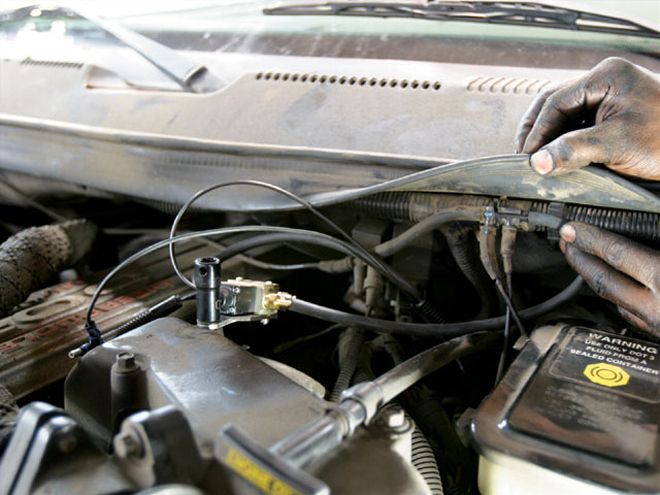
| 1997 Dodge Ram 3500 Cummins second Pressureloc
With everything tightened and torqued down, the second part of the PressureLoc system was installed. This system increases the line pressure at part-throttle when the converter is locked up to avoid converter slippage on modified vehicles. It was installed on top of the intake and was tapped into a vacuum source, and the system works in unison with the piece that was installed on the transmission itself. After finishing the install, we were ready for the most important part of the whole process, the testdrive, and were secure with the knowledge that we could now throw more power at our truck without worrying about getting stranded.
 | 1997 Dodge Ram 3500 Cummins side View
On a recent trip to L.A. Performance Division, our bone-stock '97 Dodge Ram put down 159 rear-wheel horsepower and 327 lb-ft of torque. Not bad, but not all that impressive either, and the 19-second quarter-mile time (at 69 mph) made us feel more like turtles than drag racers. We needed more go, but the OEM torque converter would only hold about 50 hp over stock, so we decided to step up and install a performance transmission and billet torque converter from BD Diesel Performance.
While diesel engines can go hundreds of thousands of miles, early diesel automatic transmissions weren't up to the task of supporting all that torque for long periods of time. Our Ram's transmission was no exception and was leaking pools of ATF on the ground, even when it was just parked for an hour or two. To make matters worse, second-generation Rams have one of the least-efficient torque converters known to man and will slip at virtually any rpm, at any speed. In talking with the folks at BD, they said the stock converters had roughly a 65 percent efficiency rating, compared with 90 percent or more for aftermarket versions.
We needed a new transmission in the worst way, one that would support the power we were eventually looking to make (about 400 hp at the wheels). With the new BD transmission, we would have a torque converter with a billet front cover, a steel stator, and a 93 percent efficiency rating. The transmission itself would also have increased line pressure through the valvebody and through the PressureLoc system, resulting in more power-handling capability and firmer shifts. While our old transmission worried us at any horsepower level over stock, the new one was rated at a continuous 400 hp, which would be perfect for towing. For our Ram, a performance transmission was the step that opened the door for all sorts of other modifications, so stay tuned as we turn up the fuel in Part 2 in hopes of gaining an extra 100 hp at the wheels.
| 1997 Dodge Ram 3500 Cummins side View
On a recent trip to L.A. Performance Division, our bone-stock '97 Dodge Ram put down 159 rear-wheel horsepower and 327 lb-ft of torque. Not bad, but not all that impressive either, and the 19-second quarter-mile time (at 69 mph) made us feel more like turtles than drag racers. We needed more go, but the OEM torque converter would only hold about 50 hp over stock, so we decided to step up and install a performance transmission and billet torque converter from BD Diesel Performance.
While diesel engines can go hundreds of thousands of miles, early diesel automatic transmissions weren't up to the task of supporting all that torque for long periods of time. Our Ram's transmission was no exception and was leaking pools of ATF on the ground, even when it was just parked for an hour or two. To make matters worse, second-generation Rams have one of the least-efficient torque converters known to man and will slip at virtually any rpm, at any speed. In talking with the folks at BD, they said the stock converters had roughly a 65 percent efficiency rating, compared with 90 percent or more for aftermarket versions.
We needed a new transmission in the worst way, one that would support the power we were eventually looking to make (about 400 hp at the wheels). With the new BD transmission, we would have a torque converter with a billet front cover, a steel stator, and a 93 percent efficiency rating. The transmission itself would also have increased line pressure through the valvebody and through the PressureLoc system, resulting in more power-handling capability and firmer shifts. While our old transmission worried us at any horsepower level over stock, the new one was rated at a continuous 400 hp, which would be perfect for towing. For our Ram, a performance transmission was the step that opened the door for all sorts of other modifications, so stay tuned as we turn up the fuel in Part 2 in hopes of gaining an extra 100 hp at the wheels.
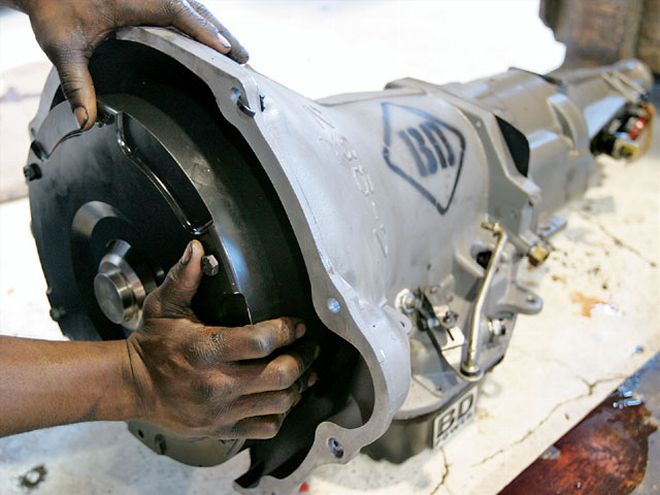
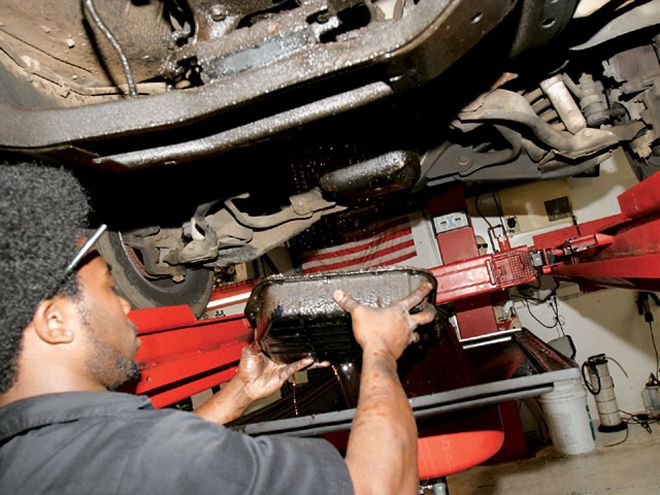
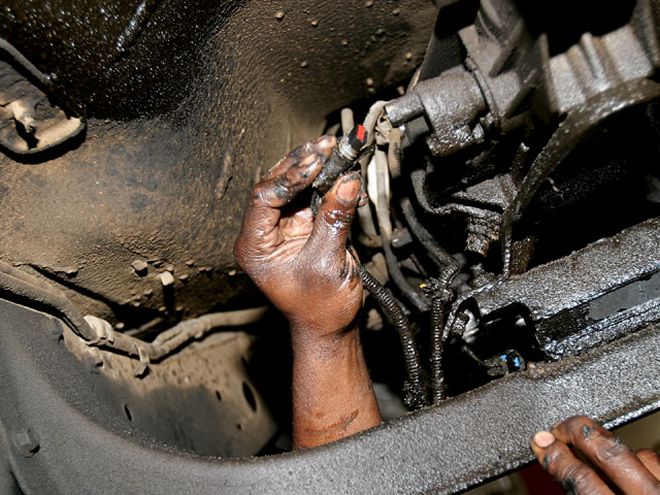
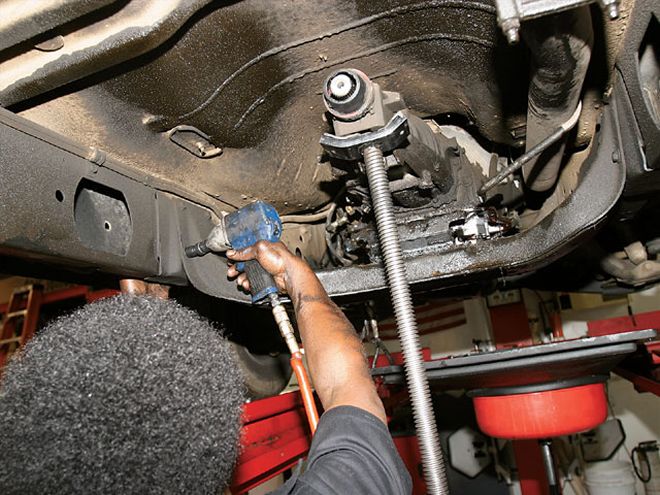
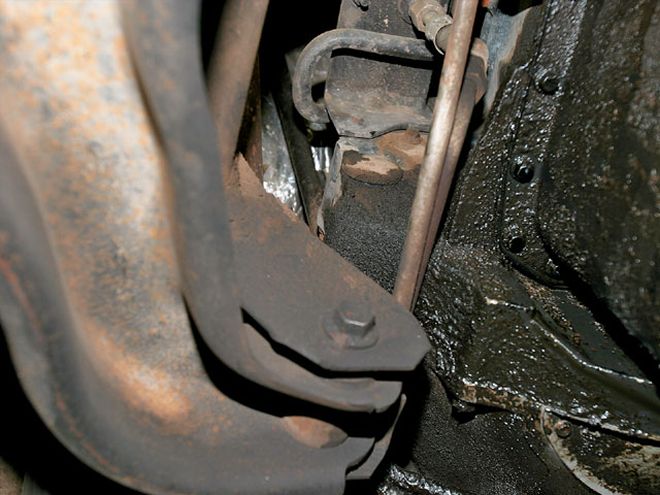
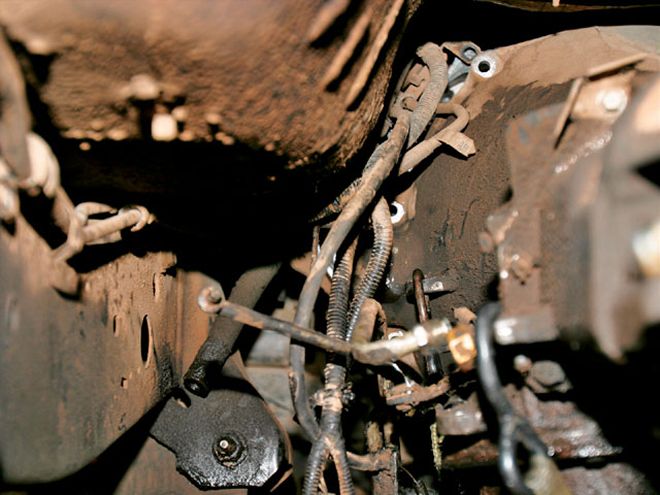
 | Fluid was poured into the converter so the transmission didn't have to try to fill up the converter with fluid when the vehicle was first driven.
Life Or Death
| Fluid was poured into the converter so the transmission didn't have to try to fill up the converter with fluid when the vehicle was first driven.
Life Or Death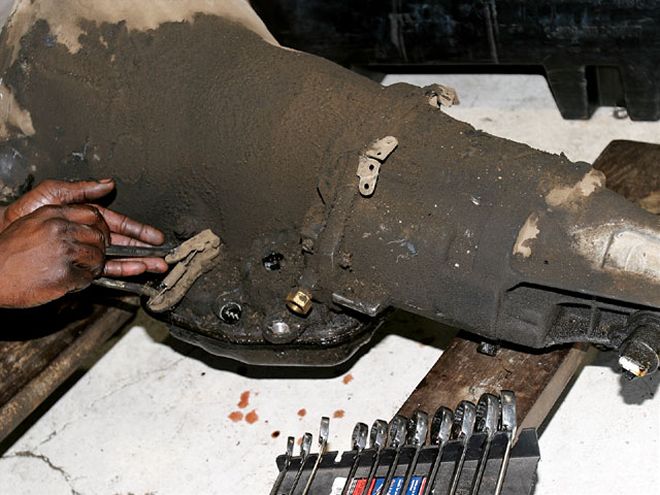

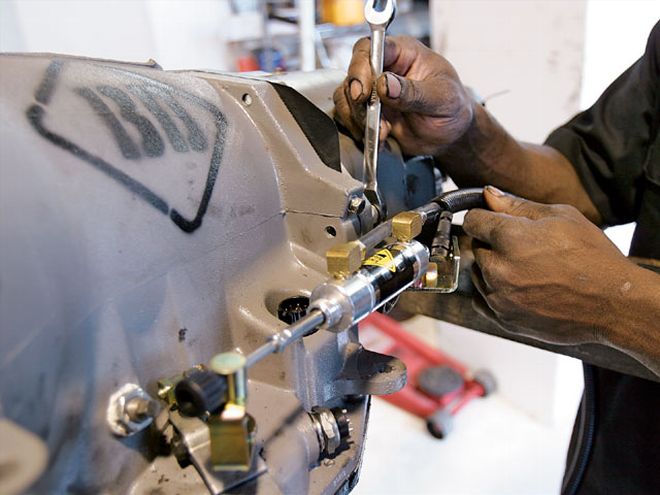
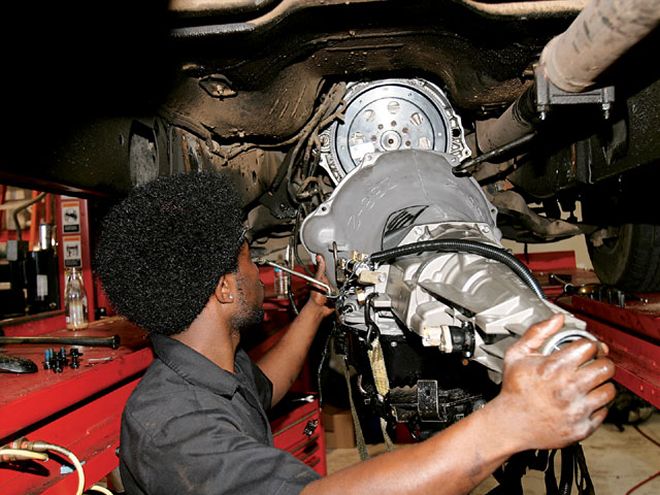
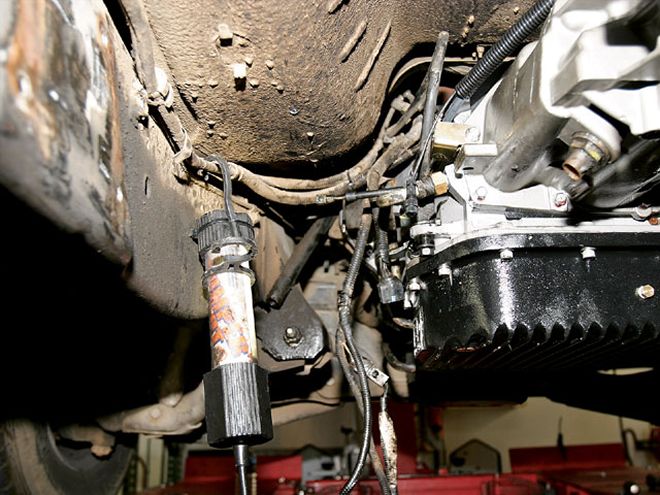
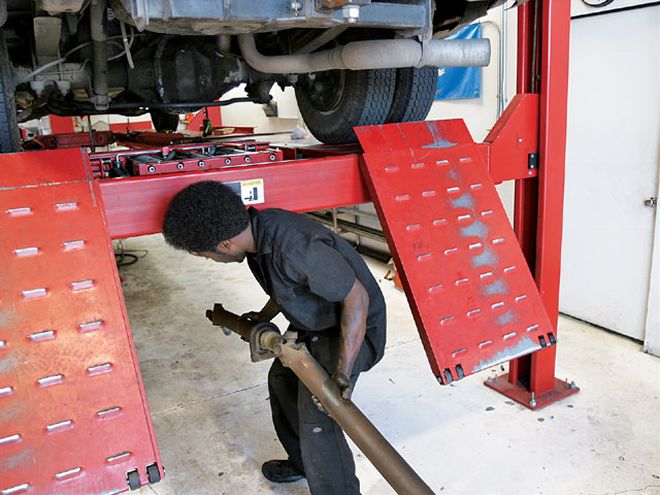
 | 1997 Dodge Ram 3500 Cummins second Pressureloc
With everything tightened and torqued down, the second part of the PressureLoc system was installed. This system increases the line pressure at part-throttle when the converter is locked up to avoid converter slippage on modified vehicles. It was installed on top of the intake and was tapped into a vacuum source, and the system works in unison with the piece that was installed on the transmission itself. After finishing the install, we were ready for the most important part of the whole process, the testdrive, and were secure with the knowledge that we could now throw more power at our truck without worrying about getting stranded.
| 1997 Dodge Ram 3500 Cummins second Pressureloc
With everything tightened and torqued down, the second part of the PressureLoc system was installed. This system increases the line pressure at part-throttle when the converter is locked up to avoid converter slippage on modified vehicles. It was installed on top of the intake and was tapped into a vacuum source, and the system works in unison with the piece that was installed on the transmission itself. After finishing the install, we were ready for the most important part of the whole process, the testdrive, and were secure with the knowledge that we could now throw more power at our truck without worrying about getting stranded.